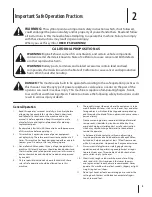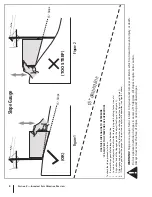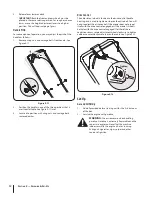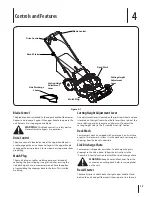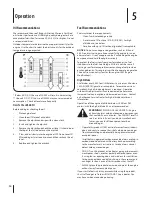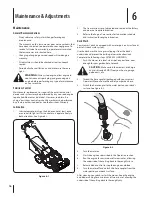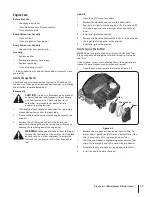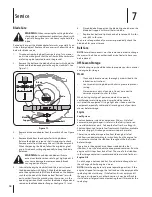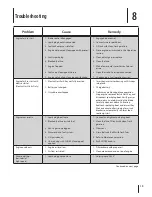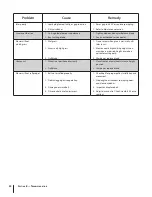
6
S
ection
2 — i
mportant
S
afe
o
peration
p
racticeS
Notice Regarding Emissions
Engines which are certified to comply with California and federal
EPA emission regulations for SORE (Small Off Road Equipment)
are certified to operate on regular unleaded gasoline, and
may include the following emission control systems: Engine
Modification (EM), Oxidizing Catalyst (OC), Secondary Air
Injection (SAI) and Three Way Catalyst (TWC) if so equipped.
Spark Arrestor
WARNING:
This machine is equipped with an
internal combustion engine and should not be used
on or near any unimproved forest-covered, brush
covered or grass-covered land unless the engine’s
exhaust system is equipped with a spark arrestor
meeting applicable local or state laws (if any).
If a spark arrestor is used, it should be maintained in effective
working order by the operator. In the State of California the
above is required by law (Section 4442 of the California Public
Resources Code). Other states may have similar laws. Federal laws
apply on federal lands.
A spark arrestor for the muffler is available through your
nearest engine authorized service dealer or contact the service
department at 1-800-317-7833.
Power Ratings
The gross power rating for individual gas engine models
is labeled in accordance with SAE (Society of Automotive
Engineers) code J1940 Small Engine Power & Torque Rating
Procedure, and is rated in accordance with SAE J1995.
Torque values are derived at 2600 RPM for those engines with
“rpm” called out on the label and at 3060 RPM for all others;
horsepower values are derived at 3600 RPM. The gross power
curves can be viewed at www.BRIGGSandSTRATTON.COM. Net
power values are taken with exhaust and air cleaner installed
whereas gross power values are collected without these
attachments. Actual gross engine power will be higher than net
engine power and is affected by, among other things, ambient
operating conditions and engine-to-engine variability.
Given the wide array of products on which engines are placed,
the gas engine may not develop the rated gross power when
used in a given piece of power equipment. This difference is due
to a variety of factors including, but not limited to, the variety
of engine components (air cleaner, exhaust, charging, cooling,
carburetor, fuel pump, etc.), application limitations, ambient
operating conditions (temperature, humidity, altitude), and
engine-to-engine variability.
Due to manufacturing and capacity limitations, Briggs & Stratton
may substitute an engine of higher rated power for this engine.



